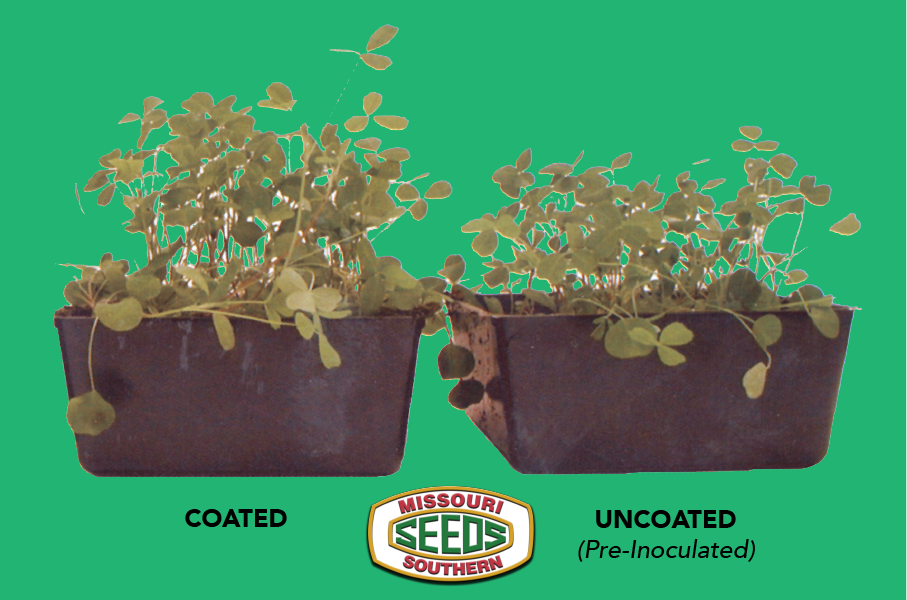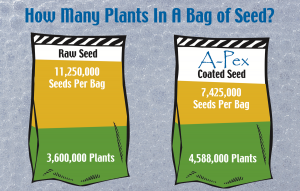
The title may be a bit misleading, but it’s a big legume debate to Missouri Southern Seed! What are the benefits of both coated and non-coated, and what’s going to get you the end product you’re looking for? We’re here to find out. Hold on to your horses, we’re getting scientific.
Seed coating is the practice of covering seeds with external materials to improve handling, protection, germination enhancement and plant establishment. Coated seeds have a mixture of nutrients, pesticides, or rhizobia. Such coatings consist of a rhizobium-peat mixture, a lime coating, a fungicide, or a combination to act as a “glue” to hold it all together.
Most legumes, such as alfalfa and clovers, have a mutually beneficial relationship with bacteria in the genus Rhizobium. Rhizobia have always been recommended by legumes for inoculation and proper growth. The other ingredients in the mixture help the seedling in its vulnerable state. Coating protects the rhizobia when coated seed is mixed with a granular fertilizer and broadcast applied in a one-step process.
Seed coating acts as a wick for water in times where moisture conditions are less than ideal. The coating material (often lime) attracts water better than the seed can. Coated seed offers better moisture absorption and transfer to the seed for germination. Coated seed is less likely to be eaten by birds and rodents because of its larger size and coating.
Coated seed offers better seed-to-soil contact. Larger farms and bigger farm equipment mean a reduced amount of time spent preparing seedbeds, resulting in seed placement that is less than ideal with poor seed-to-soil contact. Fungicides can also be added to the coating process. Fungicides give the seedling an added boost by protecting against pythium and phytophthora root rot during the seedling stage.
Care should be used when planting coated seed. Coated seed will weigh almost 1/3 more than uncoated seed because of the added coating, and will flow through the planting equipment at a different rate than uncoated seed. Planters need to be calibrated for the specific type of seed used.

Skeptics argue there is less seed in a bag of coated seed; therefore you get less for your money. Some may also claim coated seed requires an increase in seeding rates to get the same stand. However, there is ample evidence to indicate there are tangible benefits when planting coated seed.
Those who objectively evaluate the positive aspects of coated seed will see the benefits of the technology. Today, a higher percentage of coated seed is planted than in the past based on seed sales records, which indicates the value is becoming more evident to farmers.
Now aren’t you happy you finished reading through this information?
